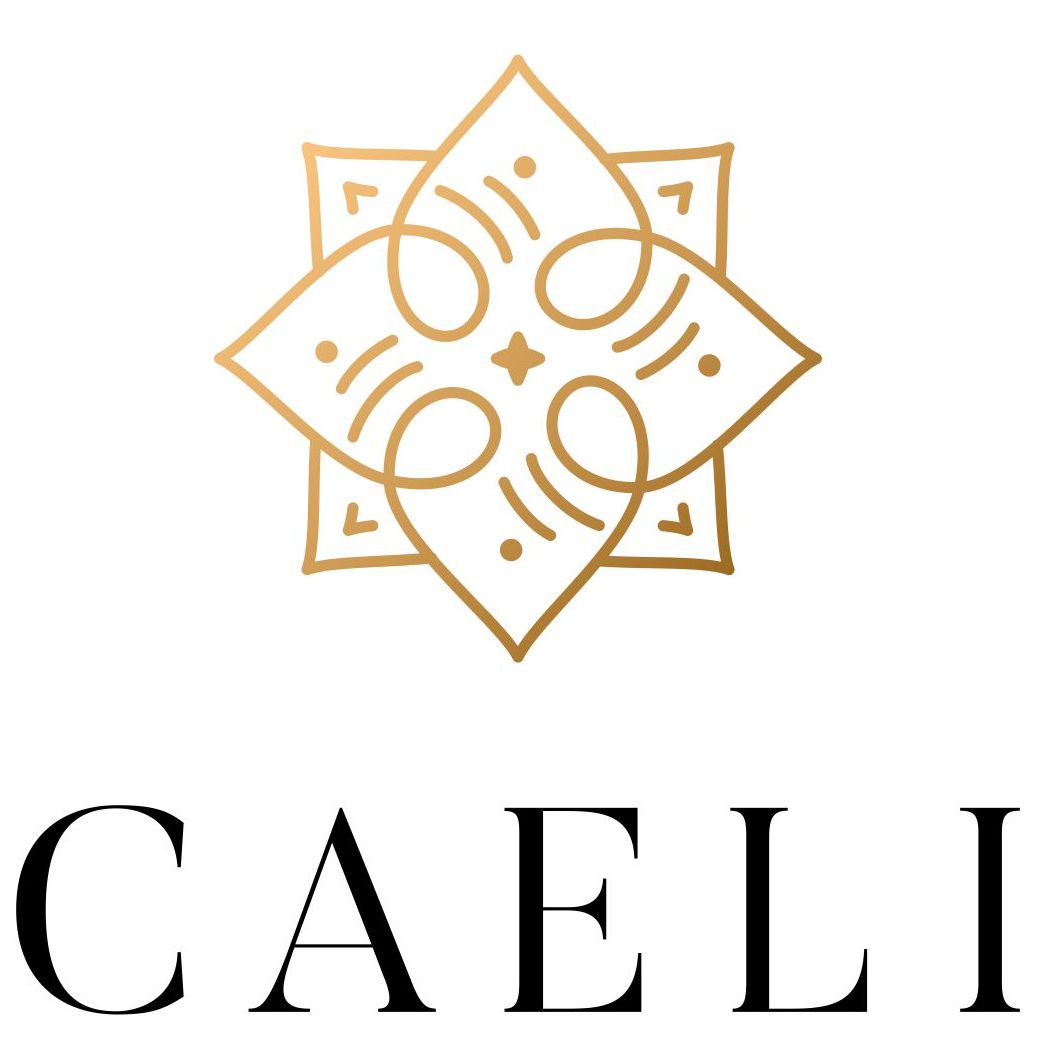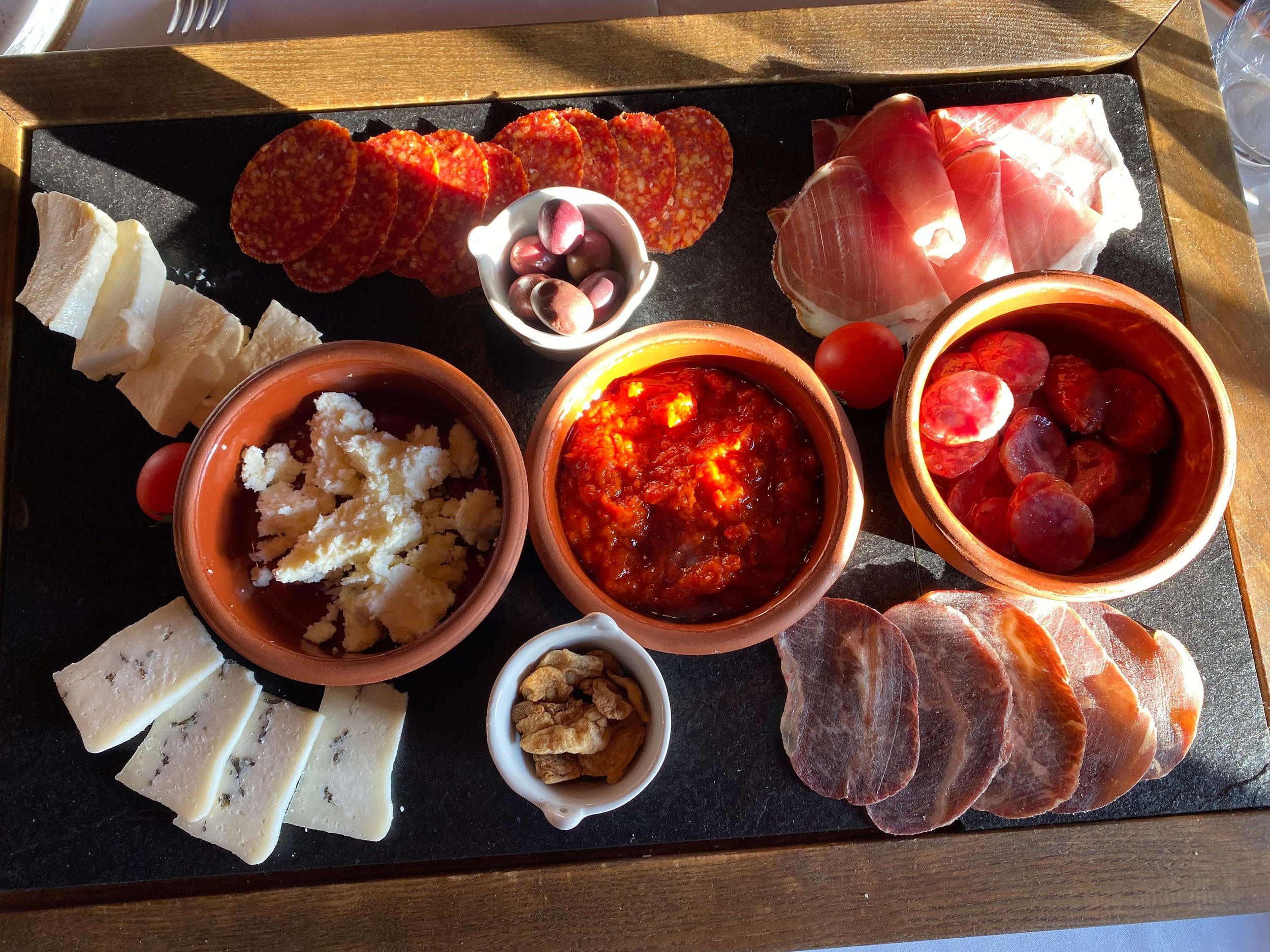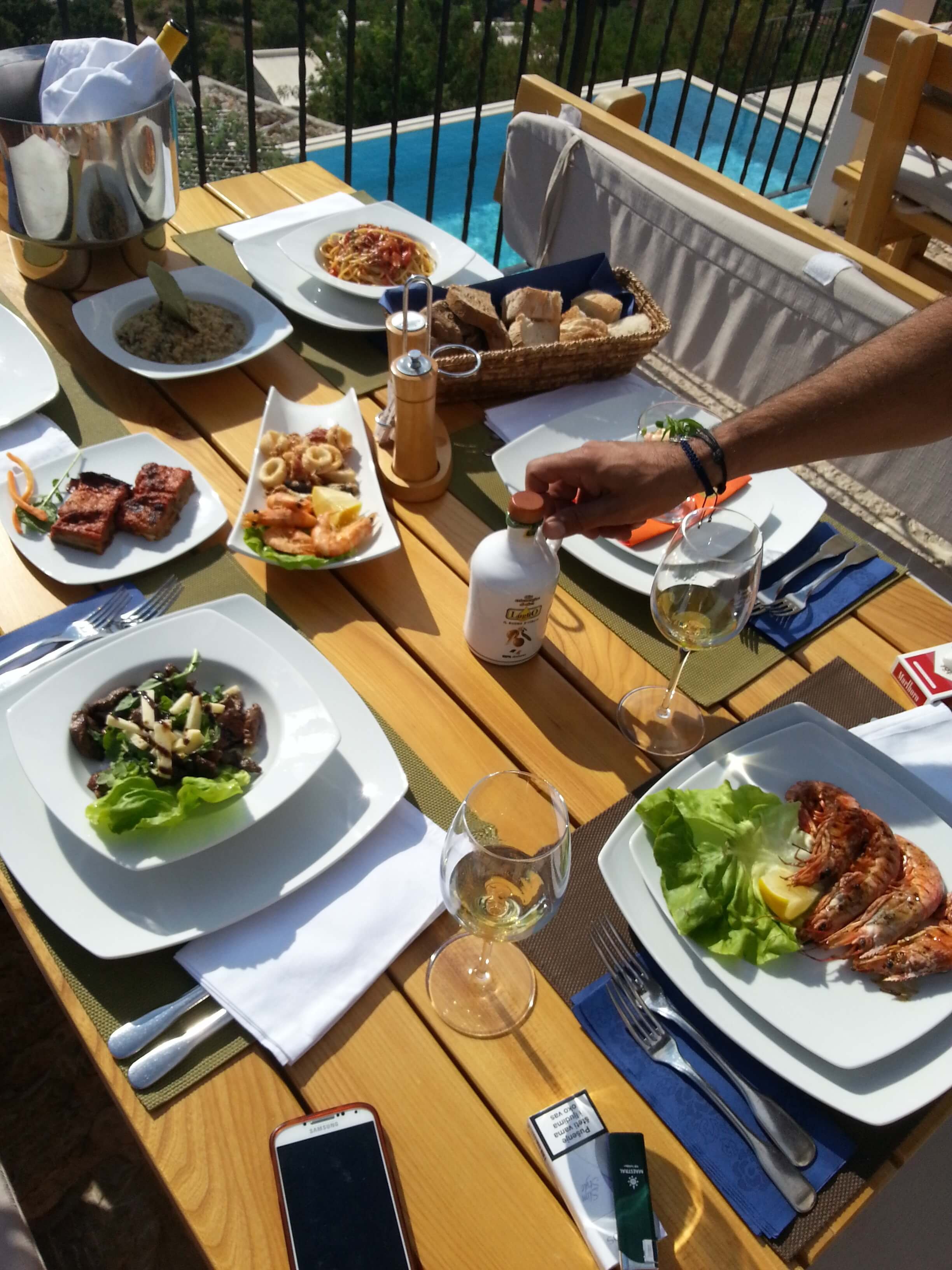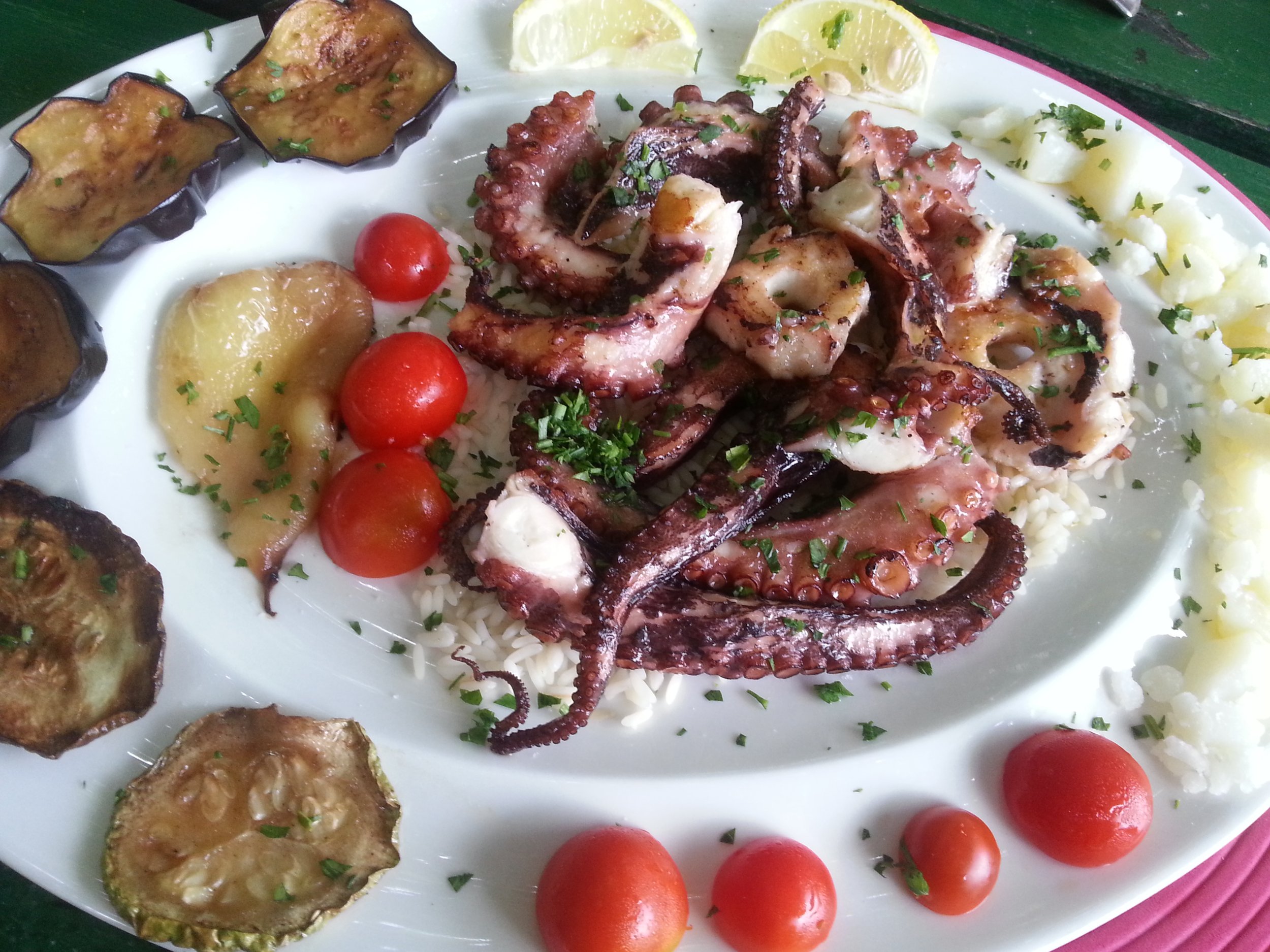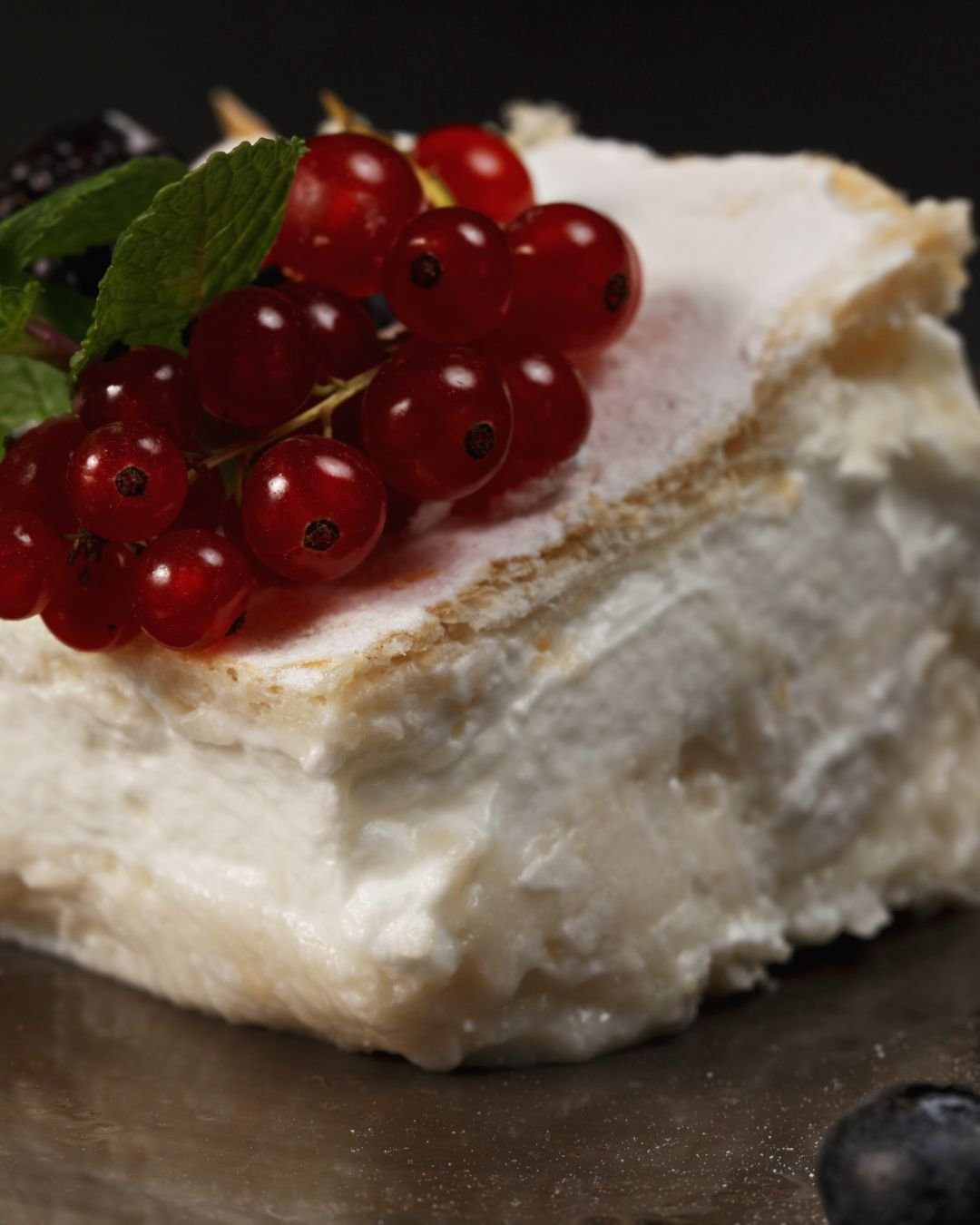Best Traditional Food To Taste In Montenegro: Awesome Cuisine That Will Surprise You
Montenegro is a small country in the Balkans that is famous for its pristine coastlines, dramatic mountains and its delicious cuisine.
Montenegro food is wholesome, organic, and simplistically delicious. Whether you're dining in the cool blue waters of the Adriatic Sea or the jagged peaks of Durmitor, you'll find a dish to suit your taste.
If you are visiting both northern and southern regions, you will really feel as though you are visiting different countries. What you will notice as soon as you step your foot in any Montenegrin restaurant, no matter the region, is the size of the portions. Everywhere you go, you will mostly find huge portions.
Famous Dishes of Montenegro and What Makes Montenegrin cuisine Unique
Montenegrin cuisine, as you are about to find out, is immensely interesting. It is a special blend of East and West, Ottoman, Italian and Balkan flavors, and it all depends on area you are in. Montenegrin cuisine will bring you closer to its core and you will understand the strong identity that is perceived through its culinary creations.
Montenegrins indeed love to eat and are proud of its dishes! Some of the most famous dishes from Montenegro are meat based dishes such as roasted lamb, popeci, burek, cevapi, fish dishes such as Skadar Lake carp, eel risotto or grilled sea food ,wide variety of cheeses, kajmak and many more which we included in this blog post.
Each dish has its own unique story, ingredients and taste. But there are also a couple of things that make this cuisine special and are present in almost every dish. First, Montenegrin food has a lot of dairy products - especially cheese. Second, almost every dish has a lot of vegetables in it, even the ones that don’t sound like they would contain them. And finally, the ingredients are fresh, organic and homemade.
Montenegrin cuisine has something for everyone - whether you're after a hearty meal or just want something light for lunch on your day out in Montenegro.
We developed this guide through its regions, so that you can try some special dishes while travelling in Montenegro.
Mediterranean cuisine from the coast of Montenegro
Central Montenegro and Lake area gastronomy
Northern Montenegro cuisine
Mediterranean cuisine from the coastal Montenegro
The Montenegrin cuisine on the coast is largely Mediterranean, due to location. Seafood is extremely popular and you can`t make a mistake if you try it. The dishes are often cooked with olive oil, garlic, and onions. Fish, octopus, calamari and different types of shellfish are prepared in restaurants all over the coastline and fresh seafood can be bought in local markets and prepared at home. Montenegrins use a lots of vegetables, good wine (both in cooking and pairing it) with the sea food and homemade olive oil. In the rural parts of the southern region, dairy products are widely used, primarily cheese (goat or sheep white cheese), prepared in a special way mostly with aromatic herbs such as rosemary or oregano as well as "ripened" in olive oil.
Grilled fish or sea food + Dalmatian garnish
Grilled calamari from the coast of Montenegro
Grilled fish by the beach, for hedonists only :)
If you are anywhere on the coast, chose a good restaurant and choose a catch of the day - get a whole fresh fish. The chef will grill it for you and as the side dish, there will be Dalmatian garnish. A delicious, garlic smelling garnish which is almost always offered with fish. The base of the garnish are potatoes, but the preliminary taste originates from the stewed vegetable called "blitva". Blitva is a type of chard which is incredibly popular in the Adriatic coastal area where it can grow all year long. Stewed together with pre-cooked potatoes and experienced with garlic and also olive oil, the fallen leaves come to be very delicate as well as delicate garnish for smoked fish and fish and shellfish.
If you are not a big fan of the fish, try grilled calamari or octopus, these dishes are absolutely delicious.
Mussels on Buzara
Buzara mussels or mussels alla buzara are an excellent example of a straightforward, delicious, fast as well as healthy dish.
Buzara is a regional name for "stew" and also it is an indispensable part of the Adriatic part of Montenegrin food. It is usually prepared with mussels, shrimps or prawns. In addition to the major element, only olive oil, garlic, a glass of wine, breadcrumbs, parsley are included.
If the recipe is prepared with the ingredients above it is called "on white". One more variant of the recipe is if tomatoes are included, and afterwards the standard name is "on the red". Buzara can likewise be discovered in Mediterranean countries such as Croatia or Italy food where the typical dish is "pastas alla busara".
Black risotto
Enjoying the deep blue waters of the Kotor Riviera or checking out the old city of Budva? Locate a seaside restaurant and also enjoy the sights while enjoying a generous black risotto dish. The risotto gets its color (and also wonderful flavour) from squid or cuttlefish ink. An unmissable treat while you’re on the seaside.
Bokeljski Brodet
Brodet or brodetto is a fish stew made in Montenegro and it comes from Boka Bay. It contains numerous kinds of fish, and one of the most important aspects is the simplicity of preparation work and the fact that it is constantly prepared in a solitary pot. It is made with onions, garlic, laurel and white wine. Brodet originated as a fishermen dish, so all those smaller fish, damaged or those that failed to sell were made on brodet.
Montenegrin Goat cheese from Bar (Kozji sir)
In the south, you can taste an especially healthy cheese of particular preference. It is goat cheese which you have to try if you are the true food lover. If you ever before pertain to food market in Bar or Ulcinj, do not miss out on the opportunity to taste the goat cheese from this location. The ideal "balls" of goat cheese, which are called "grude" in Montenegro, have actually been made from the most effective milk in this part of the nation for centuries.
krempita
A krempita is a cream pie found in a few Central European countries including Montenegro. Every region has their varieties, yet they all incorporate a puff baked pastry base and custard cream. Kotorska krempita has three layers of pastry dough with a heavenly, velvety, thick cream in between each layer of mixture, and it comes sprinkled in powder sugar for an extra delight.
Central Montenegro and Lake area gastronomy
Central part of the country has the “Old Montenegro” flavor, which is dominated by the taste of smoked ham (pršut), Njeguški cheese and Skadar Lake dishes, such as eel and smoked carp.
Njegusi cheese
We have the tiny village of Njegusi, located near Cetinje and above Boka Bay to thank for its Njegusi prosciutto (dry-cured pork) and Njegusi sir (Montenegro cheese).
Njeguški sir (Njegusi cheese) is a full fat hard cheese made mostly from sheep's milk, but also cow's, as well as goat's milk in various percentages can also be discovered. The specificity of the cheese originates from the way the curd is processed, dried out, and also aged. What I do know is that it's normally shaped right into thick round wheels, and left for 3 months in a cool, completely dry location. From there, several varieties can be produced, depending on how the ripe cheese is maintained: completely dry (i.e. consumed as-is), in salt water, in oil, or in melted tallow. For instance, you can cut the cheese into cubes, transfer to a container, fill with olive oil, add some peppercorns, and let stand for 60 days.
The locals enjoy this delicious treat with fresh Montenegrin bread or platters of olives, grapes as well as figs. Fun fact – On 08.06.2022 it was declared as 2nd best sheep’s milk cheese in the world by Taste atlas.
Delicious Njegusi prociutto
Njegusi prosciutto, likewise called the Njegusi ham, is a protected food specialty of Montenegro cuisine, and there is a strong reason for that. Njegusi prosciutto is one those foods that is climate conditioned – it is dried in an area where sea & mountain air collide, as well as the place where our most famous dynasty ruled from 17th to early 20th century. It takes almost a year to produce good quality Njegusi prosciutto.
For Montenegrins, Njegusi prosciutto or Njegusi ham is far more than a special, it's a way of life. Njegusi prosciutto has actually been a part of the Montenegrin tradition for ages, as well as an unbreakable part of their lives.
Njegusi prociutto should be made from a pig's back leg, salt-cured without any enhancement aside from sea salt, cold-smoked with beech timber, and also air-dried. The entire procedure, leads to an item that has a well-known scent, texture, and taste. The locals adore this product and use it daily. This is a treat that is supplied in Montenegrin homes as a sign of utmost hospitality, and also regard.
Priganice
Traditionally, Montenegrins will greet you with a big wide smile with a plate full of priganice, light fluffy doughnuts made by flour, water, oil, salt and sugar. They can also be served with honey and white cheese.
We like to enjoy them best while cruising Skadar Lake, however, if you can`t wait to try them - order them in any traditional restaurant. They are best enjoyed for breakfast, but also as a snack during the day.
Sarma
Sarma is a dish that is present in several Slavic nations. In Montenegro, sarma is made from minced meat, rice, and onion which is rolled in sauerkraut or grape leaves, once more depending on the region. It is cooked or roasted, depending upon the recipe.In an uncommon vegan variant, the loading is composed only of rice without the minced meat.
In this version of sarma, the wine leaves instead of cabbage were used. This dish is also called japraci and it is less comon then the other variant.
What makes our sarma various from Turkish sarma is not just the active ingredients but additionally the size, where our sarma is a lot larger. It is normally eaten for lunch.
Kiflice
Loaded up with prosciutto, ham or something sweet, these baked goods are a famous Montenegrin treat. With a similar appearance to little croissants, best kiflice can be tracked down in the capital of Montenegro, Podgorica, but you can try them in any bakery along the way. Often, savory kiflice will come with sprinkled sesame seeds on top, however we lean toward a scrumptious prosciutto and dissolved white local cheese baked in a delicious dough.
It`s majesty, burek
The unforgettable Burek, which is usually eaten for breakfast, is a treat that everyone loves. We even had a friend take burek to her boyfriend, on a 10 hour flight to Canada. If you are looking for a quick as well as easy breakfast or commonly Montenegrin snack, look no further than burek. Located at pretty much every bakery in Montenegro, these deceptively-simple pastries are absolutely delicious.
Almost every Buregdzinica (burek selling place) has their own recipe and a different way of preparing burek. Make sure to try it more then once.
Visualize a Balkan-style, mincemeat or cheese-filled bread, made with half-cracked phyllo dough as well as offered in buttery spirals or golden wedges.
Burek can also be made with spinach, mushrooms or potato. We agree to bet that you'll have more than one!
Cevapi
These delicious little sausages are made from beef, pork, or a blend of both, and hand rolled. A skewer and an open fire were traditionally used for grilling cevapi. Today, they are usually grilled, broiled, or fried.
Cevapi are mostly served with a pita-like traditional Balkan flatbread and fresh onions., If you want to try the best ćevapi, look no further than the capital of Montenegro, Podgorica. There are several places in Podgorica, claiming their ćevapi are best, but we are sure you will enjoy them in (almost) any place you go. We know all the secrets so don-t hesitate to ask us.
Skadar Lake carp
A 30-minute drive from the capital of Montenegro, Podgorica, brings site visitors to one of Montenegro's hidden treasures, Skadar Lake. The huge lake and wetland is a national park and also it's teeming with wild animals. The local speciality on the lake is Skadarski Krap (Skadar Lake Carp) and also is served fried, smoked or marinated in olive oil.
Palacinke
The list of Central Montenegro food is not complete without a sweet treat. We might have selected Montenegrin cake (kolači) or baklava, but the reality is we're in love with fluffy pancakes.
The locals fill Palacinke, or Montenegrin pancakes, with chocolate, homemade jam or honey, nuts, plazma (Balkan type of cookie) or merely dust these with sugar. Once again, perfection lies in its simplicity.
Best place to try ‘real’ Montenegrin pancakes is Belvedere restaurant, near Cetinje. You can ask for King Nikola’s pancakes, made of corn flour, filled with walnuts and local honey, and sprinkled with sauce made from dried plums cooked in wine.
Northern Montenegro dishes
Meat is a big thing in Montenegro. Especially in the north.
Almost every dish in the colder part of Montenegro comes with potatoes - we prefer them roasted.
Thanks to high quality pastures of Durmitor, Sinjajevina, Bjelasica and Prokletije, dairy and meat from Montenegrin areas in the north are true sources of life power. In the mountains, food is heavier, giving us energy for much colder temperatures and harsh winter weather.
Meat is almost always the main course and regardless that the Adriatic coast is not too far, you will certainly probably be offered pork, lamb or beef.
The dishes are frequently cooked for a number of hours under a metal round cover that is covered with cinders. The resulting meat is extremely tender, it fall-off-the-bone and it is extremely tasty.
Roasted Lamb with potatoes under the bell
If you are a meat eater, do not skip lab under the bell from northern Montenegro
Lamb under the bell (jagnjetina ispod saca) is a typical dish from the North of Montenegro, where there is a long tradition of lamb rearing. The deliciousness of this recipe originates from 2 things. First is the top quality of the meat, lambs are reared on pristine upland pastures, where they are suckling along with freerange grazing for a number of months. Secondly is the setting of preparation- this is a typical slow food recipe, as it takes numerous hours to prepare, yet the outcome is succulent meat that melts in the mouth.
The preparation is fairly basic. Fresh lamb is sliced right into huge portions (together with bones), and put in a clay pot. Whole peeled potatoes are included, along with onions, peppers and also carrots, some oil, salt and pepper. The pot is covered with a domed steel lid (sac) and also buried in hot ashes or live coal. There, it is slowly prepared in its own juices for numerous hours, till the meat is soft and tender. It is served hot, right from the pot.
Kacamak
Kacamak is Balkan-region's favorite porridge, and no one does it better than in North of Montenegro, especially city of Kolašin.
Kacamak is a traditional dish in Montenegro, made with potatoes and flour. Popular toppings are cheese or bacon, and despite being similar to cheesy mashed potatoes it needs quite a lot of strength to make it smooth. This dish is believed to have been the sustenance of farmers, they had enough energy to work all day in the fields. Locals always take kacamak with yogurt on the side and sometimes on top.
Popeci
Podgorica Popeci are a very famous Montenegrin dish, and a specialty of Montenegrin cuisine. They were created in post-war Titograd (Podgorica) by the chefs of the "Crna Gora" hotel (todays Hilton), the Italian Iatoni and his colleague Josip Balent.
Popeci dish is similar to French cordon bleu. Pork or veal schnitzel is lined with prosciutto as well as kajmak cheese, and after that rolled, breaded and fried to excellence. Enjoy it with fresh vegetables, crunchy french fries and a glass of Vranac (most popular Montenegrin red wine).
Rastan
Rastan (a bit bitter, dark-green vegetable from the cabbage family is similar to Italian cavolo nero. Rastan is deliciously cooked into a stew with smoked pork ribs, veal meat or dried ham). Full with vitamins & minerals, this meal will keep you warm in the cold mountain-side nights.
Montenegrin lamb in milk
Montenegrin lamb in milk is a typical dish that's just found in north Montenegro. The lamb is gradually stewed in milk with potatoes, carrots, fennel, rosemary, garlic, parsley and also flavoring. Commonly, this recipe is made in a sac over coals and the meat appears perfectly tender.
Kajmak
Kajmak is a type of cheese spread that is very popular in Montenegro. It is made from cow's milk or a mixture of cow's and sheep's milk.
Cheese, milk and cream are boiled over low heat until a thick cream separates out and becomes firm. Authentic kajmak is served cold. Kajmak can also be used as an ingredient in other dishes such as burek.or Kacamak.
Kolasin cheese
The most well-known cheese in Montenegro is the "Kolasinski lisnati sir (Kolasin layered cheese). This is a protected national product of Montenegro, however there are different tales concerning the origins of this cheese.
The manufacturers from Lipovo valley case that the cheese taste can not be reproduced in other Montenegrin regions,since the high quality of the grass isn't as high.
The unique feature of this cheese is that it is made in really thin layers and also it is said that the ability of the cheese maker is determined out by the variety of layers of the final product
It is a favorite of both local as well as international visitors that typically buy a couple of kilos to take back home. It can be young or matured. Young Kolasin cheese resembles Mozzarella, only much better.
Homemade bread from North of Montenegro
Homemade bread from Montenegro sure looks amazing. Taste it in more then one pplace as each restaurant has their own recipe
‘Homemade bread’ is something everyone needs to try. The bread is prepared in traditional way and it resembles French rustic breads. Bread is an indispensable part of every dish and it is ideal with young cheese, kajmak or whatever dish you ordered.
Montenegrin pies
Crusty Pie from North of Montenegro is something you need to try. We guarantee you`ll adore it. (Potato, cheese, or chard pie)
The various pies are very much existing in the traditional Montenegrin food of the north region. Pies can be both savory as well as sweet, and they used to be prepared in the family as a main course(even nowdays). Salty pies are primarily made from greens (field, spinach, chard, nettles), potatoes, pumpkin, leeks, cheese or mushrooms, and sweet ones from apples as well as cherries.
Likewise, there are numerous means to prepare pies, to ensure that puff pies (piled and also rolled) are most often prepared, and also ‘fast pies’, which can be made from corn or wheat flour. Unique pie that is prepared only in the northern area is buckwheat pie, mostly present in Bijelo Polje as well as Pljevlja.
Now that you know what to try when you visit Montenegro, it's time to wrap up this article. We hope we inspired you to visit and check out some of the traditional dishes. We also hope we showed you how delicious our food is.
Would you try anything from our list? Let us know in the coments.
